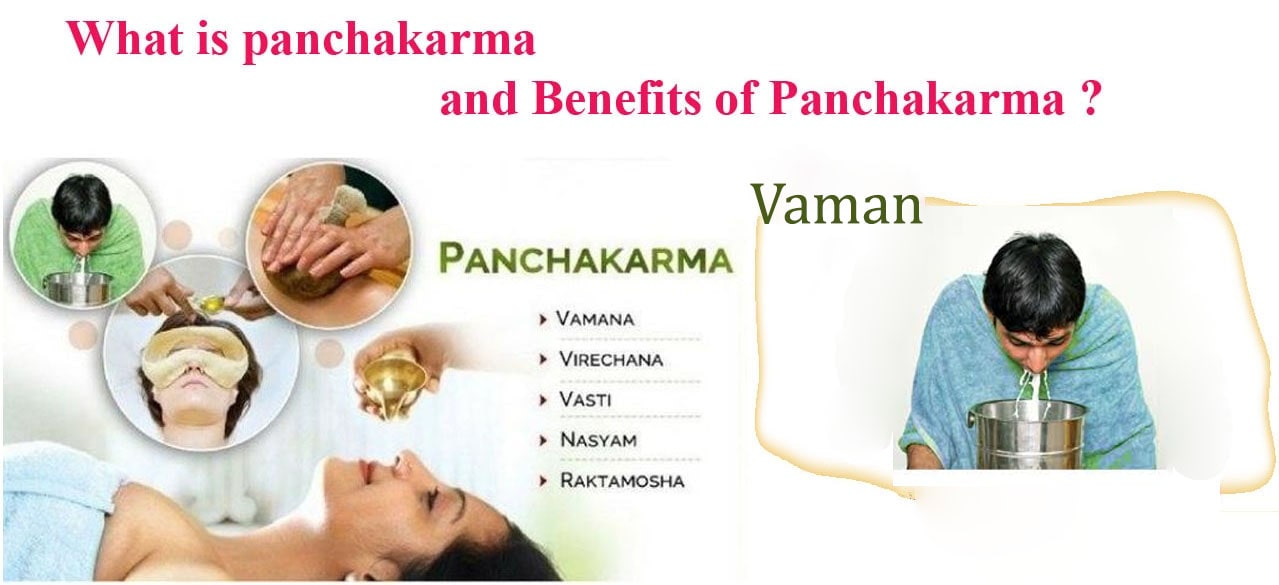
VAMANA
Vamana karma is one of the first pradhan karmas of Panchakarma, mainly used in kaphaja disorder. The method also known as therapeutic vomiting, involves expelling out the vitiated doshas through oral route.
In ayurvedic text vamana is defines as-
तत्र दोषहरणं ऊर्ध्व भागात वमन संज्ञाकरम |
उभयं वा शरीरमल विरचनाद्विरेचन सँज्ञा लभते||
The method of expelling the impurities and vitiated doshas through the upper body channels is known as vamana (emesis).
Vamana karma must always be done first and should be performed ahead of virechan karma. If virechan is done without vamana it might cause pravahika as the aggravated kapha descends and covers grahani.
BENEFITS OF VAMANA
As we have discussed vamana is chiefly for kapha dosha. Kapha dosha increases in spring. This is the reason that the method should be preferably performed in the month of March and April.
– It is considered the best treatment for kaphaja disorder.
– Acharya Sushruta says the way flowers, fruits and branches die after pulling the plant from the root, in the same way when excessive kapha is eliminated the origin of the disease is healed from the root.
– Vaman karma if performed on regular basis prevents cough, throat infection, excessive sleep, grahani dosha etc.
INDICATIONS AND CONTRAINDICATION OF VAMANA KARMA
The therapy is suitable for people between the age group of 15 and 60 years. It is performed in individuals suffering from disorders due to kapha dosha or kapha-pitta disorder.
Vamana must not be performed in children and in people above 60 years. It is contraindicated in hypertension, peptic ulcer, diabetes, pregnancy, dehydration etc.
PROCEDURE OF VAMANA KARMA
The therapy is carried out in 3 steps –
1) Purva karma
2) Pradhan karma
3) Paschat karma
Purva karma or preparation of the patient before pradhan karma includes-
a) Use of digestives and appetizers (deepana and pachana) – it increases jatjragni (digestive power) and brings lightness in the body. Herbs used are agnitundi vati, chitrakadi vati, trikatu churna etc.
b) Internal oleation- medicated or non medicated ghee is administered for 3 to 7 days depending upon the requirement of the patient, till the doctor observes the proper sign and symptoms of snehana.
c) Abhyanga (eternal oleation) and swedana- after performing internal oleation the patient undergoes massage with herbal oil followed by swedana of the whole body.
Along with these there is a proper diet regime that must be followed. Usually it is advised to take good amount of liquid and warm food that is easily digestible. Just before the day of vanana, heavy diet such as plenty of milk, curd etc is recommended.
PRADHAN KARMA-
It is induced in the early morning. The patient is made to sit in a comfortable vamana chair. The doctor keeps the record of the pulse and blood pressure before, after and during the vamana karma. While the emesis is in process the forehead and chest is held and umbilical region is pressed with gentle upward massage on the back.
PASCHAT KARMA-
The patient is under observation till he/she achieve the strength. It is advised to avoid loud sound, noise, excessive walk or exercise, exposure to excessive cold, heat etc. Along with it special diet is followed.
The main aim of Ayurveda is to maintain the health of a healthy person by preventing him from the illness. Panchakarma being an important part of Ayurveda helps in achieving this goal.
Recent Posts
Infertility Treatment in Pune | Best Doctor for Infertility in Pune
Infertility Treatment in Pune – Best Doctor for Infertility in…
Infertility Treatment in Lucknow
Infertility Treatment in Lucknow Infertility is a condition in which…
Freedom from Infertility
Freedom from Infertility : Ayurveda & Panchakarma Treatment Centre Freedom…
Frequently Asked Questions
Benefits of vamana includes –
– It is considered the best treatment for kaphaja disorder.
– Acharya Sushruta says the way flowers, fruits and branches die after pulling the plant from the root, in the same way when excessive kapha is eliminated the origin of the disease is healed from the root.
– Vaman karma if performed on regular basis prevents cough, throat infection, excessive sleep, grahani dosha etc.
In ayurvedic text vamana is defines as-
तत्र दोषहरणं ऊर्ध्व भागात वमन संज्ञाकरम |
उभयं वा शरीरमल विरचनाद्विरेचन सँज्ञा लभते||
The method of expelling the impurities and vitiated doshas through the upper body channels is known as vamana (emesis).
Benefits of nasya karma includes –
– Improves the growth and health of the hair.
-Enhances the function of sense organs and prevents diseases related to head.
-Delays ageing
After vamana the patient is advised to take rest and avoid eating heavy food. It is advised to eat light food such as moong ki khichdi (made from rice and pulses).




